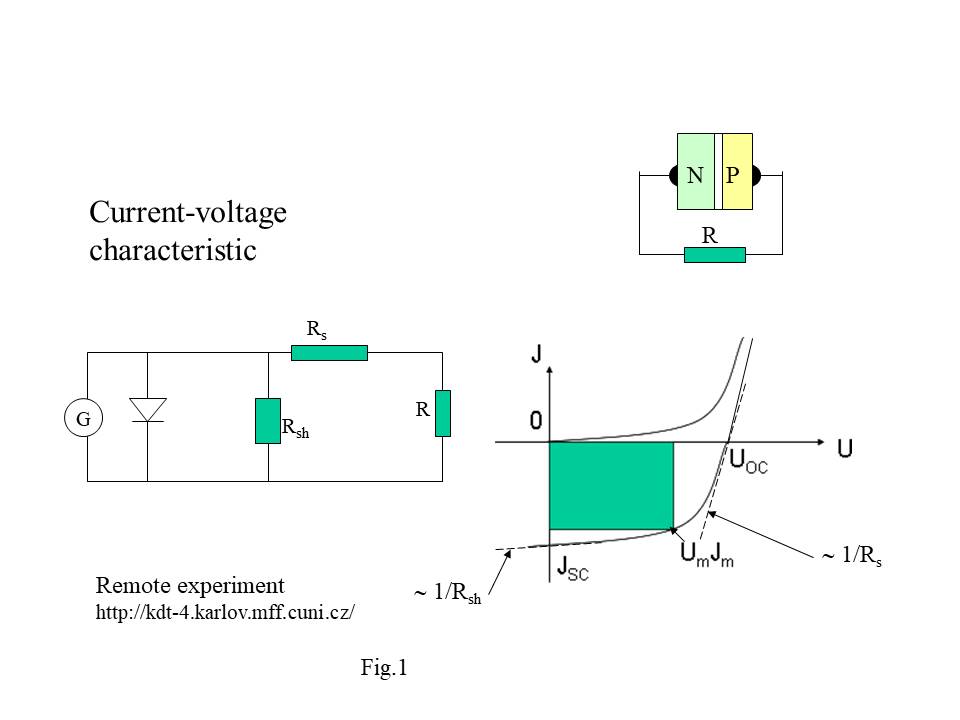Solar energy conversion
Physical Background
The basis of a photovoltaic cell is a semiconductor diode, usually based on a PN junction. Its voltage-current characteristic in the dark, ideally without the influence of series and parallel resistance, is:

where J is the current flowing through the diode, J0 is the reverse current, U is the voltage, k is the Boltzmann constant, T is the absolute temperature, n is the diode ideality coefficient, which is related to the charge transfer mechanism through the diode, e is the electron charge. When illuminated, the diode turns into a source of electric current. An equivalent circuit diagram of an illuminated cell as a generator of the current JL with a diode connected in parallel is shown in Fig. 1 on the left. In reality, in addition to the load resistance R, it is necessary to take into account the series resistance RS and the parallel resistance RSH. The resistance RS represents the resistance of the volume of the semiconductor and the contacts, while RSH is usually related to a leakage current. The voltage-current characteristic then has the form:

This dependence is shown in Fig. 1 on the right in the 4th quadrant; UOC and JSC are the values of the open-circuit voltage and short-circuit current, which are influenced by the series and parallel resistance. The area of the largest inscribed rectangle indicates the maximum power that can be obtained from the cell (Um·Jm). The efficiency of the cell is then the ratio of this power to the power P of the incident light. The reflection of light from the surface of the material, characterized by reflectivity, which is about 35 % for silicon, also plays a role. Assuming a large parallel resistance, the value of the series resistance can be obtained directly from the slope of the volt-ampere characteristics at the UOC point. The inverse values of the resistances RS and RSH are shown in the figure by the tangents.
From the measured dependence of the current on the voltage, the so-called fill factor (FF) can also be determined as:

The maximum power is Pmax = JSC·UOC·FF and the efficiency of the cell is then Pmax/P.

Authors of the study text: doc. RNDr. Jana Toušková, CSc. and doc. RNDr. Jiří Toušek, CSc. (Charles University in Prague, Faculty of Mathematics and Physics)
Literature
- D. K. Schreder, Semiconductor material and device characterization, Chapter 8, A Wiley Interscience Publication, John Wley & Sons, Inc. New York 1990.
- M. A. Green, Solar Cells, Prentice Hall, Inc., Englewood Cliffs, N.J. 07632, 1982.
- H. Frank, Fyzika a technika polovodičů, SNTL, Praha 1990.
